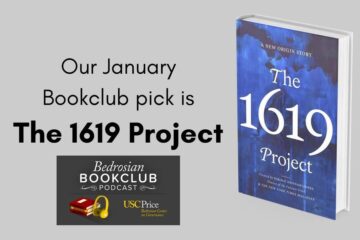What Will Tomorrow Bring
Flash forward to Los Angeles six years into the future.
The city is clogged by a rising tide of traffic; the public school system is in shambles, with the majority of students failing to graduate high school; Los Angeles can no longer afford to pay for most vital services; and most city residents live in poverty, desperate to work but lacking opportunities to participate in the global economy. A city in dangerous decline, Los Angeles of 2020 bears a greater resemblance to an urban area in the developing world such as São Paulo than to New York or Chicago.
That’s the vision presented by the Los Angeles 2020 Commission in a report entitled “A Time for Truth.” Appointed by Los Angeles City Council President Herb Wesson last year, the Los Angeles 2020 Commission is co-chaired by former U.S. Commerce Secretary Mickey Kantor and former Los Angeles Deputy Mayor Austin Beutner and 11 other city leaders and stakeholders. The bleak report paints a picture of the city crippled by bureaucracy and missed opportunities.
Los Angeles is sinking into a future in which it no longer can provide the public services to which our people’s taxes entitle them and where the promises made to public employees about a decent and secure retirement simply cannot be kept. City revenues are in long-term stagnation and expenses are climbing. Year by year, our City — which once was a beacon of innovation and opportunity to the world — is becoming less livable.
The commission was originally convened to address economic development opportunities in the city, but the wide-ranging report tackles much more than opportunities for job creation. The report starts by drawing attention to a “crisis in leadership” before going on to a laundry list of pressing issues from Los Angeles’s dismal track record of educational attainment, the departure of Fortune 500 companies from the city, dramatic inequalities, and high unemployment rate.
The Los Angeles 2020 Commission proceeds to touch on other issues as varied as LAPD overtime banking, low voter turnout, and overoptimistic pension estimates, though it often fails to provide context for some while many others are oversimplified and lack a clear diagnosis of the problem at hand.
Presented to the City Council earlier this month, the 2020 Commission has already come under some criticism both for its heavy-handed language as well as its trite analysis of the city’s woes. Although the report saw little official acknowledgement from Mayor Eric Garcetti and the City Council, some commentators have continued the discussion with a different set of questions for the commission to focus on while the Los Angeles Times and others have noted that many of the principals in the report represent interests described in the report. Bill Boyarsky thinks that the report’s dismissal of recent transit developments is missing an increasingly important part of the city’s infrastructure and that the city’s oft-bemoaned traffic is actually a sign of vibrant job growth:
High tech and the entertainment business have created a job-producing corridor along Olympic. Same thing is happening along Culver Boulevard and in the Playa del Rey area. Job-heavy UCLA and the airport also bring in residents and traffic. With jobs come population growth. This pokes a hole in the commission’s contention that L.A. is a job-killing city.
While it’s easy to pick out problems in Los Angeles, the harder task will be to sell the City Council and residents about ways to reverse thorny social and economic trends. The Los Angeles 2020 Commission says solutions and ideas are on the way. The second half of its report will come within 90 days, leading many to hope that the doomsday talk leads to a badly needed injection of innovative ideas to ameliorate the city’s poor record of dysfunction and social outcomes.



